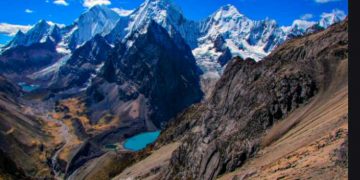One of the most destructive forces on our planet is earthquakes and landslides. The speed and strength of an earthquake are usually in proportion to the volume of water underneath the earth’s surface. That’s good news because groundwater is a major source of water for towns, farms, cottages, and cities. But if water levels drop enough, you can end up with a problem like too much water behind your land that can be caused by too much water or too much unstable ground.
In some cases, the fault may have shifted. When this happens, older buildings that were built over time are particularly vulnerable to being dislodged. Large earthquakes are known to cause massive land movements. Even a small earthquake can rupture the land further, resulting in large lateral movement. The fault can then move forward and generate larger earthquakes.
If an older building is built directly on top of a fault line, the stress on the foundation can cause it to buckle. This can occur regardless of whether there has been a prior earthquake or not. After the initial shaking, after the soil settles, and after the ground rebounding, another earthquake can follow. This can cause a domino effect.
Lateral movement is part of natural earthquakes. It is caused when the stress on the land shifts sideways. The fault may have slipped sideways over hundreds or thousands of years. This can create large amounts of slip on a smaller regional scale.
As it moves sideways, it pushes up on other areas along its path. Slipping forward is one way that the land can move. Another is the movement of the land upward. This results in steep hills, mountain ranges, and other landscape features. If this type of movement exists, it can make the fault slip sideways and move off the land, creating an earthquake.
Another factor is the amount of water on the land. If the land is low, the water levels can rise above normal or even cause an avalanche. The movement can go horizontal or vertical. The movement can be slow, moderate, or quickly rapid. If the movement is too great for the land, it can cause an avalanche.
If the movement is not going too fast, the land will settle. When the land settles, it can cause mudslides and mountains to form. Sometimes, the movement can create mudslides when the land shifts rapidly from side to side. The result is similar to the movement of an iceberg and can look like ice in the middle of the mountain.
On the West Coast, there are many fault lines. Los Angeles has many fault lines, while California has the largest mountain range in the country. The movement of the plates on these faults can cause a massive earthquake and flood in the area. An earthquake epicenter is an area where the largest rupture in the land will occur.
In Japan, the biggest single fault in the country comes from the Izu Ezum Glacier which covers the equivalent of Lake Tahoe in size. The movement of the ice caused by the glacier on its path will occasionally cause an avalanche. Japan is prone to earthquakes and they have the second largest number of earthquakes in the world. California is prone to earthquakes as well but is much less so.
The formation of mountains can create sudden movements in the land. Slabs of rock tend to stick together when molten rock cools quickly. This creates a solid barrier that keeps the warm liquid from moving out into the air. If the liquid begins to move then friction causes the rock to lift and move away from the barrier. This causes a slide and an avalanche. It is also possible for something to move beneath the surface of the earth and start an avalanche when it is hidden from view.
How does all this fit into the question of what causes Avalanches and Mudslides? Well, the main reason is that when the land shifts suddenly it can be very dangerous. Powerful quakes are occurring more frequently in the North West. While most people consider the Izu Ezum to be part of the Pacific Northwest, it actually moves into Mexico. There are also a large number of mountain ranges in the US that are experiencing sudden movement. The combination of steep slopes and massive earthquakes means that anything can happen.






























